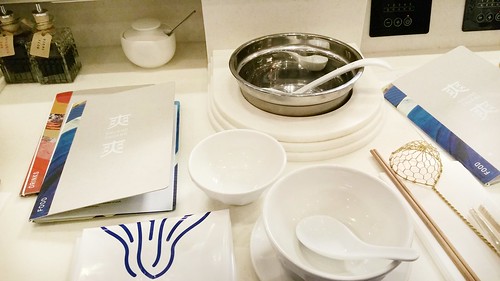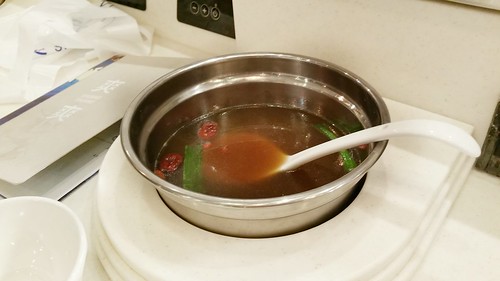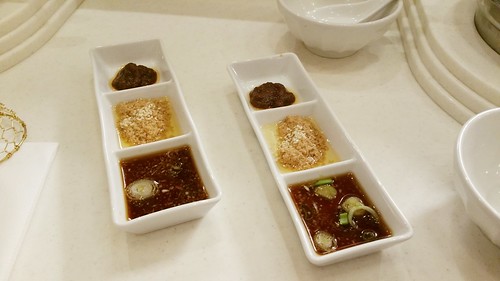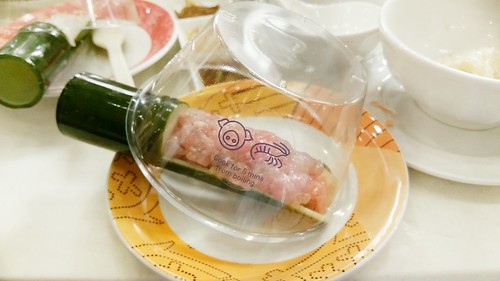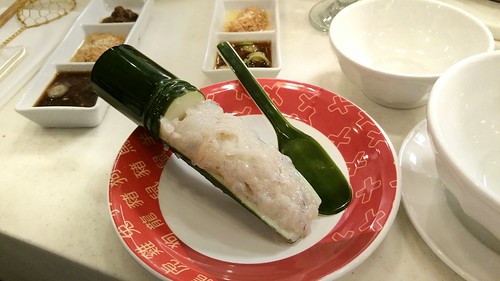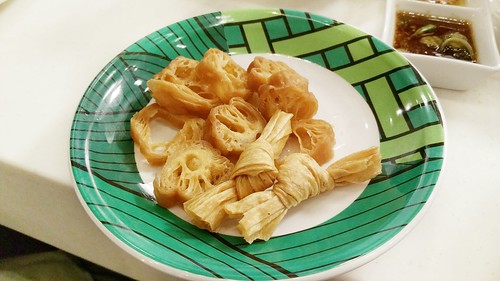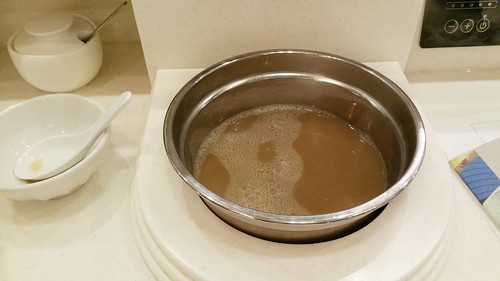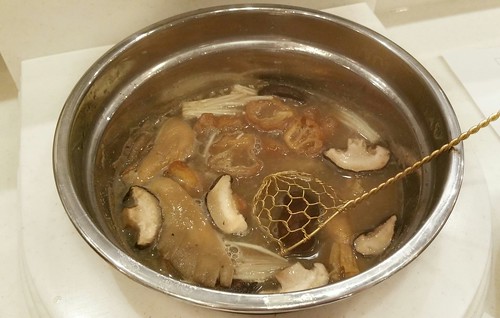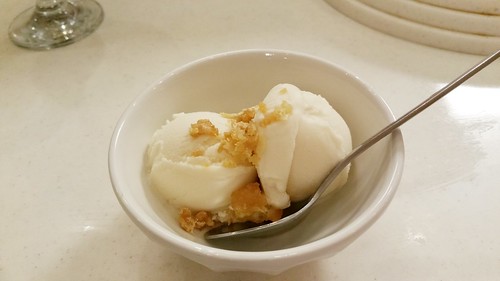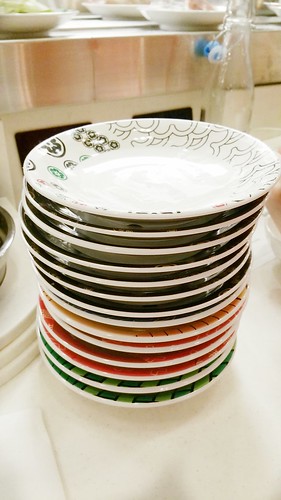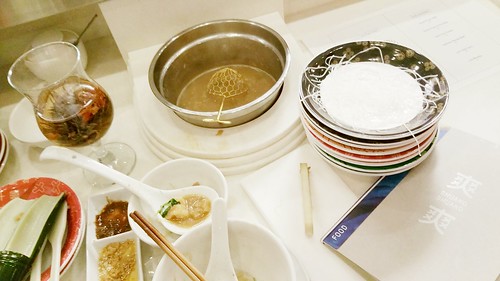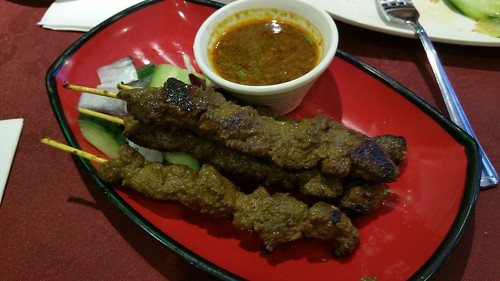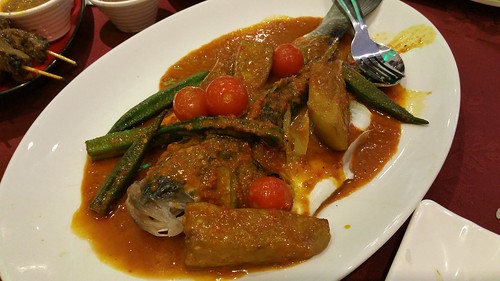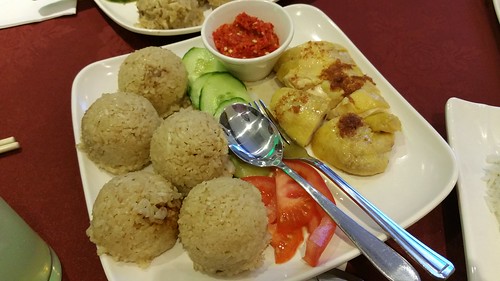Kojawan is a bar and restaurant serving drinks and fusion Asian food in a space-age atmosphere. It is located on the 23rd floor of Hilton Metropole hotel, which is two minutes walk from Edgware tube station. The hotel doesn’t have the best of look from the outside but when you are inside it is like maze.

It was surprising how impressive the view from this hotel and from Edgware Road. You could see in the distant many London iconic skyscrapers including The Shard, Gherkin and London Eye.

The deco of the restaurant make is interesting to want to visit Kojawan. The attention that has gone in to every part of the restaurant from when you first arrive, to walking up the stairs and sitting at the table.

I love the logo which appeared around different items in the restaurant. It reminded me of the cartoon Transformers.

The menu is in a ring binder which also show off the Transformers looking logo. There is a large range of wine, spirits and cocktails served at Kojawan. This probably make up most of the menu.

The cocktails includes some of Kojawan’s own creation. Unfortunately many of them were not available during the soft launch.
Alien Cowboy (£15) – Maker’s Mark Bourbon, Sweetcorn, Spiced Chocolate and Crickets.

Plum Crazy (£15) – Plum Sake, Yuzu, Sparkling Sake

From the classic cocktails we ordered the Cosmopolitan – Grey Goose LeCitron Vodka, Cointreau, Lime and Cranberry
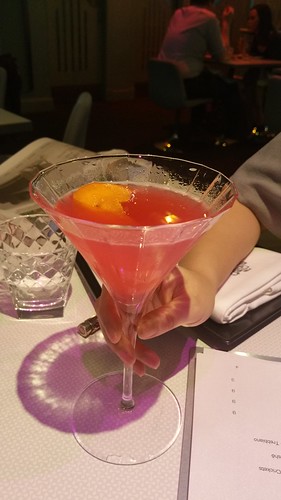
If you are not in to alcohol, there are non-alcohol cocktails as well as a range of teas, juice and soft drinks.

The food menu is split in to Booze Food, Raw, Deep-Fried, Charcoal Oven, Fire Stove, X-tras and Sweet.
Raw:
Seared Black Kingfish with radish and citrus soy (£13)

Suffolk Wagyu Medium Raw with white radish and wakamole (£15) – I found this dish bland in flavour even when I combined the wakamole, white radish and sauce with the beef.

Deep-Fried:
Hot Crickets Bombs with citrus butter sauce (£9) – This was every thing about crickets in different form to make up the bombs. You will find hidden in the creamy filling mini crispy crickets, which freak me out. I was not that keen on the flavour of the bomb which was tasted of maize. Instead I prefered the crispy fried cricket that was layered at the bottom of the dish.

Charcoal Oven:
BBQ beef cheek with chilli, ginger and sesame (£18) – This was beautiful tender meat in a sauce that went well with the flavour of the beef cheek. Squeeze some of the lime juice will give it another flavour and balance out the strong flavour of the sauce.

Sticky pork belly with jalapeno ponzu (£16) – The pork belly was beautiful cooked until tender in a nice sweet tangy sauce. Each slices was a good portion side of fat and lean meat.

Octopus with lemon and smoked red pepper oil (£18) – The octopus was not chewy but nicely soft and tender. This reminded me the octopus you would get on Spanish tapas menu.

Fire Stove:
Crab-turnip “egg cake” with shellfish lemon cream and fish flakes (£14) – The was Kojawan take of Okonomiyaki which is a Japanese savoury pancake. It tasted similar to the traditional Okonomiyaki but thought the presentation was lacking some beauty.

Braised short rib of beef with chilli and green leaves, mushrooms and peanuts (£21) – The beef was really tender and went well with the rich Asian flavour from the sauce. I thought this went well with the sticky rice (£5) that is found on the X-tras section of the menu.

Flat noodles with clams, sake, parmesan and fish flakes (£15) – This dish to me was East meet west. The flat noodles are what I would refer to us udon and it doesn’t have much flavour. So it went well with the sauce which brought the dish to live with the clams.

Whole lobster with morels, seaweed and shellfish tea (£31)

X-tras:
Sweet potato noodles – stir fried taste (£6) – This was Kojawan version of Korean stir-fried glass noodle, but instead being stir fried dry it was in a broth sauce.

Leafy greens with garlic and sesame (£6) – This was a nice side dish to balance out the strong flavours in the other dishes.

We could had given the dessert a miss as I felt it was nothing special. It did not hit my dessert taste buds. Although some of the dessert had a sense of Asian fusion in to it, I thought it was too westernise.
Fish waffles (£9) – This is Kojawan version of Japanese fish waffle that is stuffed with red bean. It is served with blueberries, black sesame and honey whiskey cream. I thought that Kojawan waffle was not as fluffy as the tradition versions and had this glaze look to it.

PanTako (£9) is pancake served with white chocolate and berries. I found this dessert was too sweet for me. It was a filling dessert which I would recommend to share.

Seoul-Kyo Mess (£9) is described on the menu made up of lychee, green tea, cream and sake. I am not sure which part was green tea as the whole dessert was white and nor could I taste any green tea. The dessert was made up of layers of cream, mini meringue and lychee with a hint of sake.

Overall I thought the dishes were interesting in using a mixture of ingredients and flavours. The two chefs (Bjorn Van Der Horst and Omar Romero) who are behind Kojawan are bold with the flavours of their dishes. I did felt that the starters and mains were better than the dessert.
Kojawan is an expensive place to dine and the cocktails do not come cheap here as well. Although we had 50% off food during the soft launch it costed us £40 each (including three cocktails and two tea). Just imagine at full price it would had costed £80 per person. Eeek!

(Not sponsored. Menu and prices correct at the time of dining)
Kojawan
Level 23, Hilton Metropole,
225 Edgware Road,
London,
W2 1JU,
UK

